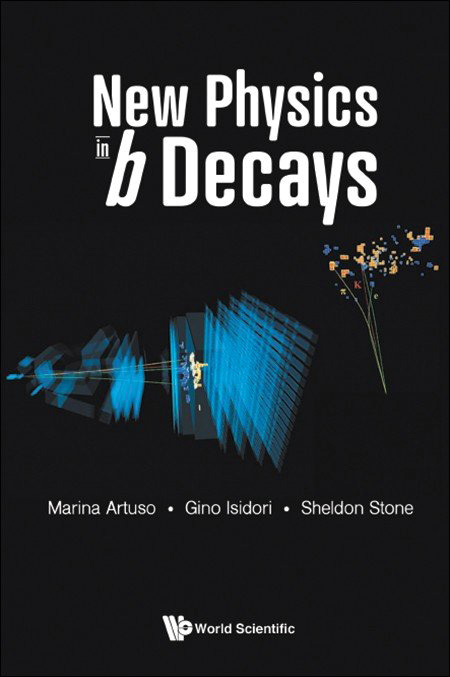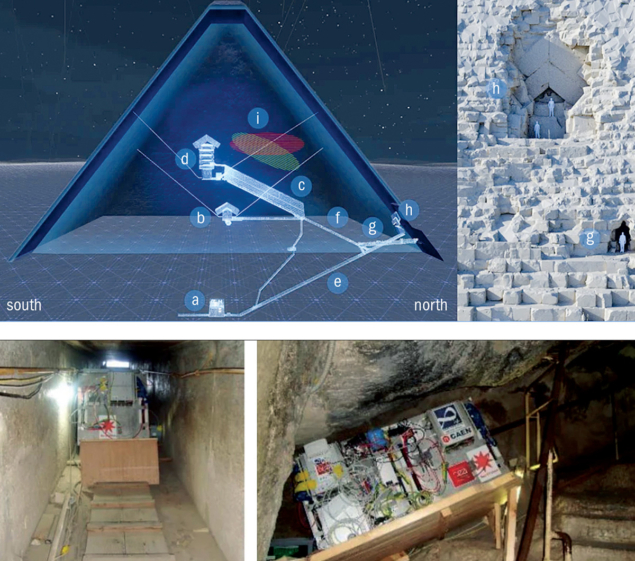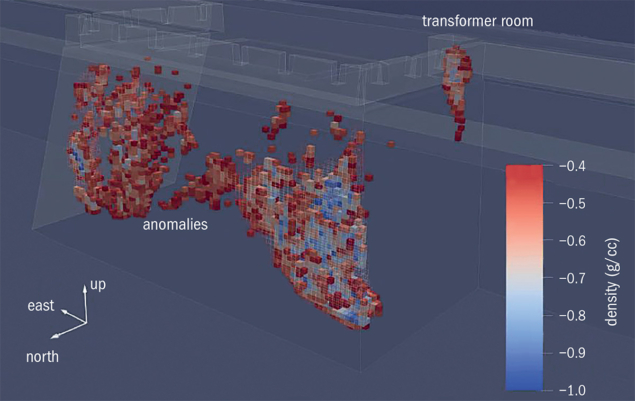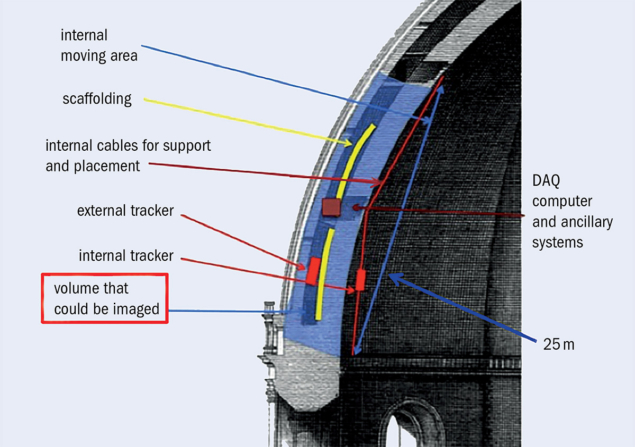“Now I know what the atom looks like!” Ernest Rutherford’s simple statement belies the scientific power of reductionism. He had recently discovered that atoms have substructure, notably that they comprise a dense positively charged nucleus surrounded by a cloud of negatively charged electrons. Zooming forward in time, that nucleus ultimately gave way further when protons and neutrons were revealed at its core. A few stubborn decades later they too gave way with our current understanding being that they are comprised of quarks and gluons. At each step a new layer of nature is unveiled, sometimes more, sometimes less numerous in “building blocks” than the one prior, but in every case delivering explanations, even derivations, for the properties (in practice, parameters) of the previous layer. This strategy, broadly defined as “build microscopes, find answers” has been tremendously successful, arguably for millennia.
Natural patterns
While investigating these successively explanatory layers of nature, broad patterns emerge. One of which is known colloquially as “naturalness”. This pattern essentially asserts that in reversing the direction and going from one microscopic theory, “the UV-completion”, to its larger-scale shell, “the IR”, the values of parameters measured in the latter are, essentially, “typical”. Typical, in the sense that they reflect the scales, magnitudes and, perhaps most importantly, the symmetries of the underlying UV completion. As Murray Gell-Mann once said: “everything not forbidden is compulsory”.
So, if some symmetry is broken by a large amount by some interaction in the UV theory, the same symmetry, in whatever guise it may have adopted, will also be broken by a large amount in the IR theory. The only exception to this is accidental fine-tuning, where large UV-breakings can in principle conspire and give contributions to IR-breakings that, in practical terms, accidentally cancel to a high degree, giving a much smaller parameter than expected in the IR theory. This is colloquially known as “unnaturalness”.
There are good examples of both instances. There is no symmetry in QCD that could keep a proton light; unsurprisingly it has mass of the same order as the dominant mass scale in the theory, the QCD scale, mp ~ ΛQCD. But there is a symmetry in QCD that keeps the pion light. The only parameters in UV theory that break this symmetry are the light quark masses. Thus, the pion mass-squared is expected to be around m2π ~ mq ΛQCD. Turns out, it is.
There are also examples of unnatural parameters. If you measure enough different physical observables, observations that are unlikely on their own become possible in a large ensemble of measurements – a sort of theoretical “look elsewhere effect”. For example, consider the fact that the Moon almost perfectly obscures the Sun during a lunar eclipse. There is no symmetry which requires that the angular size of the Moon should almost match that of the Sun to an Earth-based observer. Yet, given many planets and many moons, this will of course happen for some planetary systems.
However, if an observation of a parameter returns an apparently unnatural value, can one be sure that it is accidentally small? In other words, can we be confident we have definitively explored all possible phenomena in nature that can give rise to naturally small parameters?
From 30 January to 3 February, participants of an informal CERN theory institute “Exotic Approaches to Naturalness” sought to answer this question. Drawn from diverse corners of the theorist zoo, more than 130 researchers gathered, both virtually and in person, to discuss questions of naturalness. The invited talks were chosen to expose phenomena in quantum field theory and beyond which challenge the naive naturalness paradigm.
Coincidences and correlations
The first day of the workshop considered how apparent numerical coincidences can lead to unexpectedly small parameters in the IR due to the result of selection rules that do not immediately manifest from a symmetry, known as “natural zeros”. A second set of talks considered how, going beyond quantum field theory, the UV and IR can potentially be unexpectedly correlated, especially in theories containing quantum gravity, and how this correlation can lead to cancellations that are not apparent from a purely quantum field theory perspective.
The second day was far-ranging, with the first talk unveiling some lower dimensional theories of the sort one more readily finds in condensed matter systems, in which “topological” effects lead to constraints on IR parameters. A second discussed how fundamental properties, such as causality, can impose constraints on IR parameters unexpectedly. The last demonstrated how gravitational effective theories, including those describing the gravitational waves emitted in binary black hole inspirals, have their own naturalness puzzles.
The ultimate goal is to now go forth and find new angles of attack on the biggest naturalness questions in fundamental physics
Midweek, alongside an inspirational theory colloquium by Nathaniel Craig (UC Santa Barbara), the potential role of cosmology in naturalness was interrogated. An early example made famous by Steven Weinberg concerns the role of the “anthropic principle” in the presently measured value of the cosmological constant. However, since then, particularly in recent years, theorists have found many possible connections and mechanisms linking naturalness questions to our universe and beyond.
The fourth day focussed on the emerging world of generalised and higher-form symmetries, which are new tools in the arsenal of the quantum field theorist. It was discussed how naturalness in IR parameters may potentially arise as a consequence of these recently uncovered symmetries, but whose naturalness would otherwise be obscured from view within a traditional symmetry perspective. The final day studied connections between string theory, the swampland and naturalness, exploring how the space of theories consistent with string theory leads to restricted values of IR parameters, which potentially links to naturalness. An eloquent summary was delivered by Tim Cohen (CERN).
Grand slam
In some sense the goal of the workshop was to push back the boundaries by equipping model builders with new and more powerful perspectives and theoretical tools linked to questions of naturalness, broadly defined. The workshop was a grand slam in this respect. However, the ultimate goal is to now go forth and use these new tools to find new angles of attack on the biggest naturalness questions in fundamental physics, relating to the cosmological constant and the Higgs mass.
The Standard Model, despite being an eminently marketable logo for mugs and t-shirts, is incomplete. It breaks down at very short distances and thus it is the IR of some more complete, more explanatory UV theory. We don’t know what this UV theory is, however, it apparently makes unnatural predictions for the Higgs mass and cosmological constant. Perhaps nature isn’t unnatural and generalised symmetries are as-yet hidden from our eyes, or perhaps string theory, quantum gravity or cosmology has a hand in things? It’s also possible, of course, that nature has fine-tuned these parameters by accident, however, that would seem – à la Weinberg – to point towards a framework in which such parameters are, in principle, measured in many different universes. All of these possibilities, and more, were discussed and explored to varying degrees.
Perhaps the most radical possibility, the most “exotic approach to naturalness” of all, would be to give up on naturalness altogether. Perhaps, in whatever framework UV completes the Standard Model, parameters such as the Higgs mass are simply incalculable, unpredictable in terms of more fundamental parameters, at any length scale. Shortly before the advent of relativity, quantum mechanics, and all that have followed from them, Lord Kelvin (attribution contested) once declared: “There is nothing new to be discovered in physics now. All that remains is more and more precise measurement”. The breadth of original ideas presented at the “Exotic Approaches to Naturalness” workshop, and the new connections constantly being made between formal theory, cosmology and particle phenomenology, suggest it would be similarly unwise now, as it was then, to make such a wager.










